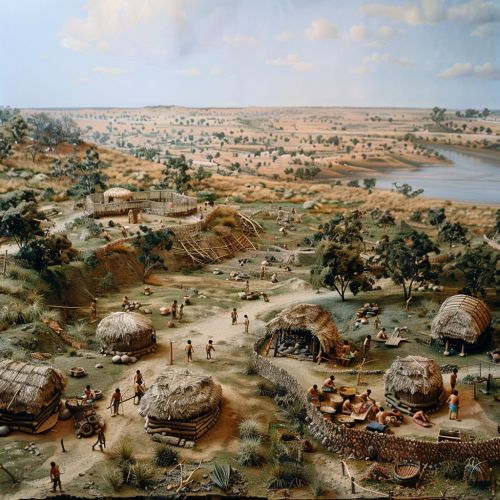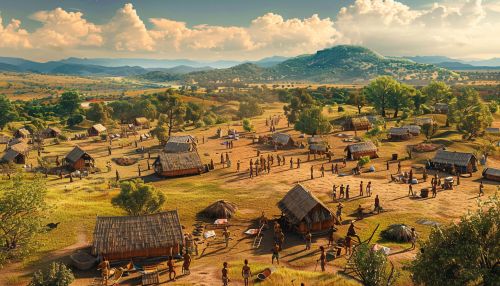Indigenous peoples of the Americas
Pre-Columbian Era
The Indigenous peoples of the Americas have a rich and complex history that predates the arrival of Europeans. The term "pre-Columbian" refers to the period before Columbus's arrival in the Americas in 1492. This era is characterized by the development and flourishing of many indigenous cultures across the continent.


Early Inhabitants
The first inhabitants of the Americas are believed to have migrated from Siberia via the Beringia, a land bridge that connected Asia and North America during the last Ice Age. These early peoples, known as Paleo-Indians, are thought to have arrived in the Americas around 15,000 years ago, although some archaeological evidence suggests an even earlier date.
Development of Cultures
Over time, these early inhabitants spread out across the continent, giving rise to a diverse array of cultures. In North America, cultures such as the Clovis, Folsom, and Plano are known for their distinctive stone tool technologies. In Central and South America, complex societies such as the Olmec, Maya, Inca, and Aztec developed, building large cities, creating intricate art, and developing advanced systems of agriculture, trade, and governance.
Contact with Europeans
The arrival of Europeans in the Americas, beginning with Columbus's voyage in 1492, had profound impacts on the indigenous peoples. This period is often referred to as the Columbian Exchange, a term that encapsulates the widespread transfer of people, plants, animals, culture, and diseases between the Americas and the Old World.
Impact of Diseases
One of the most devastating aspects of the Columbian Exchange was the introduction of Old World diseases to which the indigenous peoples had no immunity. Diseases such as smallpox, measles, and influenza decimated indigenous populations, with some estimates suggesting that up to 90% of the indigenous population died as a result of these diseases.
Colonization and Resistance
Despite the devastating impacts of disease, indigenous peoples resisted European colonization in various ways. Some, like the Pueblo peoples in what is now the southwestern United States, successfully expelled European colonizers for a time. Others, like the Haudenosaunee (Iroquois) Confederacy in the northeastern United States and southeastern Canada, used diplomatic strategies to maintain their sovereignty and negotiate with European powers.
Modern Era
In the modern era, indigenous peoples across the Americas continue to maintain their cultures and identities, despite ongoing challenges. These include issues related to land rights, cultural preservation, and social and economic inequality.
Indigenous Rights Movements
The 20th and 21st centuries have seen the rise of indigenous rights movements across the Americas. These movements, such as the American Indian Movement in the United States and the Zapatista movement in Mexico, have fought for recognition of indigenous rights, sovereignty, and cultural preservation.
Contemporary Issues
Despite these movements, indigenous peoples continue to face significant challenges. These include ongoing struggles for land rights, the preservation of cultural heritage and languages, and addressing social and economic disparities. However, indigenous peoples also continue to contribute to their societies in significant ways, through their cultural contributions, political activism, and stewardship of the environment.
